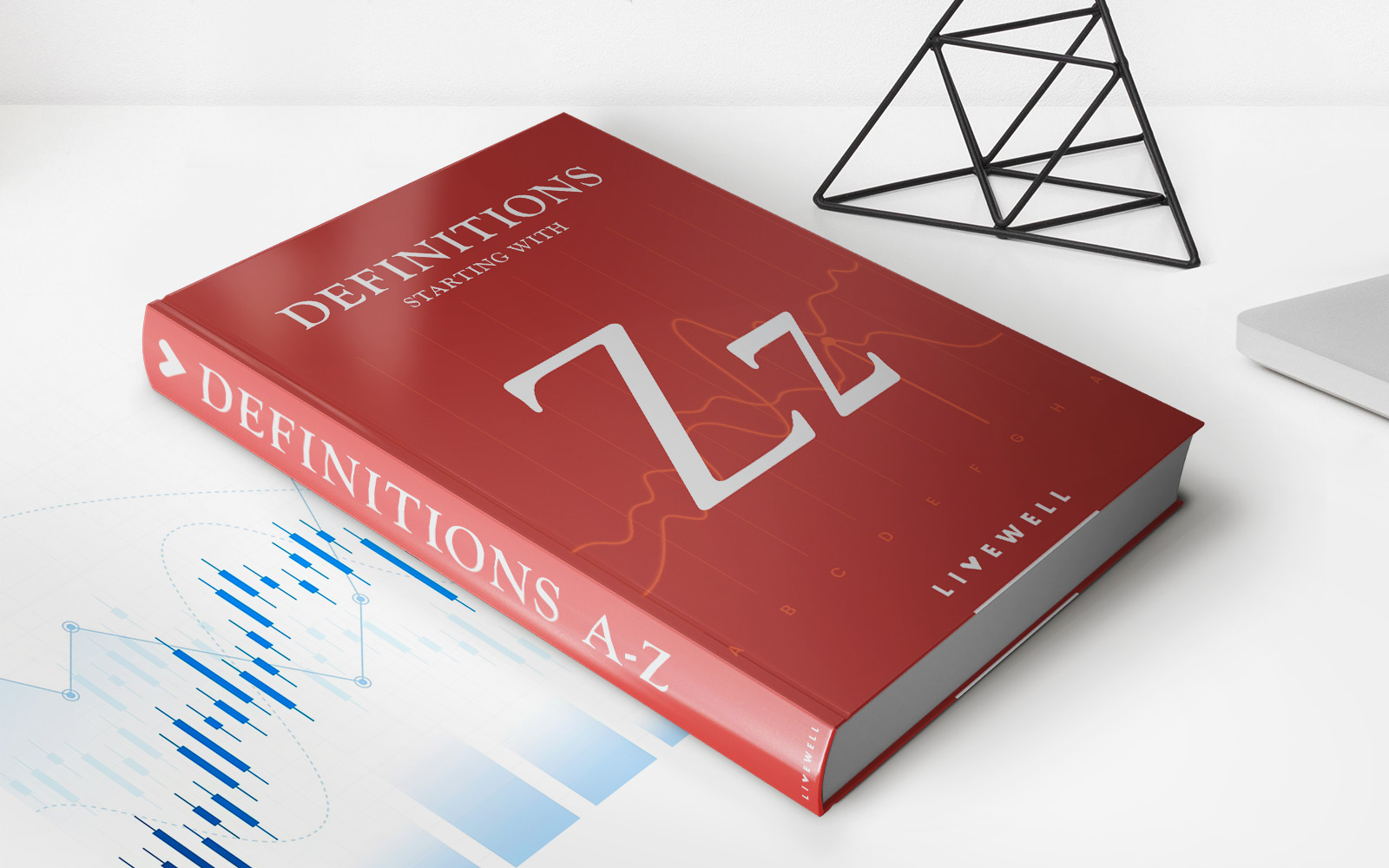

Finance
What Does Zero Percent Credit Utilization Mean
Published: March 6, 2024
Learn what zero percent credit utilization means and how it impacts your finances. Understand the significance of maintaining a low credit utilization ratio for financial well-being.
(Many of the links in this article redirect to a specific reviewed product. Your purchase of these products through affiliate links helps to generate commission for LiveWell, at no extra cost. Learn more)
Table of Contents
Introduction
Understanding the Concept of Zero Percent Credit Utilization
Credit utilization is a crucial factor in determining an individual's credit score and overall financial health. It refers to the percentage of a person's available credit that they are currently using. Maintaining a low credit utilization ratio is generally considered favorable, as it demonstrates responsible financial management and a reduced risk of default. However, there is a particular scenario that often sparks curiosity and confusion among consumers: zero percent credit utilization.
In this article, we will delve into the concept of zero percent credit utilization, exploring its implications, advantages, and potential drawbacks. Understanding the nuances of this financial metric is essential for anyone seeking to optimize their credit score and make informed decisions regarding their financial well-being.
Zero percent credit utilization occurs when an individual is not utilizing any of their available credit. This means that their credit card balances are consistently kept at zero or that they are not using their available credit lines. While this may seem like an ideal situation, it raises questions about how it impacts credit scores and financial profiles. To comprehensively address this topic, we will explore the significance of credit utilization, the effects of maintaining zero percent credit utilization, and the strategies for managing this aspect of personal finance effectively.
Understanding Credit Utilization
Credit utilization, often referred to as the credit utilization ratio, is a fundamental component of credit scoring models and plays a pivotal role in assessing an individual’s creditworthiness. It is calculated by dividing the total amount of outstanding balances on credit accounts by the total credit limit across all accounts and then multiplying by 100 to express it as a percentage.
For instance, if a person has a total credit limit of $10,000 and their combined outstanding balances amount to $2,000, their credit utilization ratio would be 20%. This ratio provides insights into how responsibly an individual manages their available credit. Lenders and credit scoring agencies use this metric to gauge the level of risk associated with extending credit to a particular individual.
Generally, a lower credit utilization ratio is considered favorable, as it indicates that an individual is not overly reliant on credit and is effectively managing their finances. This, in turn, suggests a lower risk of default and responsible credit behavior. As a result, maintaining a credit utilization ratio below 30% is often recommended to ensure a positive impact on one’s credit score.
It is important to note that credit utilization applies to revolving credit accounts, such as credit cards and lines of credit, rather than installment loans. By regularly monitoring and managing their credit utilization, individuals can proactively influence their credit scores and strengthen their overall financial standing.
Understanding the significance of credit utilization is crucial for anyone aiming to improve their creditworthiness and secure favorable terms on loans and credit products. In the following sections, we will explore the implications of maintaining zero percent credit utilization and the potential advantages and disadvantages associated with this approach.
The Impact of Zero Percent Credit Utilization
Zero percent credit utilization can have both positive and negative implications for individuals and their credit profiles. While it may seem counterintuitive, as it suggests responsible credit management, there are specific considerations to bear in mind when evaluating the effects of maintaining zero percent credit utilization.
From a positive standpoint, zero percent credit utilization reflects a conservative and disciplined approach to credit usage. It demonstrates that an individual is not relying heavily on credit to finance their expenses and is effectively managing their available credit lines. This can be perceived favorably by lenders and credit scoring models, as it indicates a lower risk of default and responsible financial behavior.
However, maintaining zero percent credit utilization for an extended period may also raise concerns for lenders and credit agencies. It could potentially signal inactivity or a lack of recent credit history, which might make it challenging for lenders to assess an individual’s current creditworthiness. Additionally, while zero percent credit utilization may not directly harm a credit score, it does not actively contribute to its improvement either. This is because credit scoring models typically favor a demonstrated history of responsible credit usage over prolonged periods.
Furthermore, individuals with zero percent credit utilization may face challenges in certain situations, such as when applying for new credit. Lenders may prefer to see a moderate level of credit utilization, as it provides insights into how an individual manages credit and debt. Without recent credit activity or a demonstrated ability to manage credit responsibly, individuals with zero percent credit utilization may encounter difficulties when seeking new credit opportunities.
It is important to recognize that credit utilization, including zero percent credit utilization, is just one of many factors that contribute to an individual’s overall creditworthiness. While maintaining a low credit utilization ratio is generally advisable, consistently aiming for zero percent credit utilization may not always yield the desired outcomes.
In the subsequent sections, we will explore the pros and cons of zero percent credit utilization and provide insights into how individuals can effectively manage their credit utilization to optimize their credit scores and financial well-being.
Pros and Cons of Zero Percent Credit Utilization
When considering zero percent credit utilization, it is essential to weigh the potential advantages and disadvantages associated with this financial approach. By evaluating the pros and cons, individuals can make informed decisions regarding their credit management strategies and understand the implications of maintaining zero percent credit utilization.
Pros
- Perception of Responsible Financial Management: Zero percent credit utilization can convey a sense of disciplined financial management, indicating that an individual is not reliant on credit for day-to-day expenses.
- Potential Positive Impact on Credit Score: While not a guaranteed outcome, maintaining zero percent credit utilization may contribute to a favorable credit score, especially when coupled with other positive credit behaviors.
- Reduced Risk of Debt Accumulation: By consistently keeping credit card balances at zero, individuals mitigate the risk of accumulating high-interest debt, fostering a more stable financial position.
Cons
- Limited Recent Credit History: Zero percent credit utilization may result in a lack of recent credit activity, potentially making it challenging for lenders to assess an individual’s current creditworthiness.
- Potential Difficulty in Obtaining New Credit: Some lenders may prefer to see a moderate level of credit utilization to gauge an individual’s credit management capabilities, potentially posing challenges when seeking new credit opportunities.
- Minimal Impact on Credit Improvement: While zero percent credit utilization does not directly harm credit scores, it may not actively contribute to credit improvement, as credit scoring models favor a demonstrated history of responsible credit usage over time.
It is evident that zero percent credit utilization presents both advantages and drawbacks, emphasizing the importance of understanding the nuances of credit management and its impact on financial well-being. By carefully considering the pros and cons, individuals can make informed decisions regarding their credit utilization strategies and tailor their approach to align with their long-term financial goals.
In the subsequent section, we will delve into strategies for effectively maintaining zero percent credit utilization and optimizing one’s credit profile while mitigating potential challenges associated with this approach.
How to Maintain Zero Percent Credit Utilization
Maintaining zero percent credit utilization requires a strategic and proactive approach to credit management. While this endeavor presents certain challenges, it is achievable with careful planning and disciplined financial habits. Here are several strategies to effectively maintain zero percent credit utilization:
Regular Monitoring and Payment:
Consistently monitor credit card balances and ensure that they are paid in full and on time each month. By staying vigilant about credit card usage and promptly settling balances, individuals can sustain zero percent credit utilization without accruing interest charges.
Strategic Use of Credit Cards:
Use credit cards for essential expenses and budgeted purchases while remaining mindful of staying within one’s means. By strategically utilizing credit cards and adhering to a predefined budget, individuals can maintain zero percent credit utilization without compromising their financial stability.
Consider Multiple Credit Cards:
For individuals with multiple credit cards, distributing expenses across these cards can help maintain zero percent credit utilization on each account. This approach requires careful management to ensure that the overall credit utilization across all cards remains at zero percent.
Avoiding Unnecessary Credit Inquiries:
Minimize unnecessary credit inquiries, as these can inadvertently impact credit scores and potentially introduce new credit accounts that may affect credit utilization. Individuals should be cautious when applying for new credit and consider the potential implications on their credit utilization ratio.
Regularly Review Credit Reports:
Periodically review credit reports to identify any discrepancies or inaccuracies that could impact credit utilization calculations. By promptly addressing any errors, individuals can ensure that their credit reports accurately reflect their financial standing and credit utilization status.
By implementing these strategies and maintaining a proactive approach to credit management, individuals can effectively sustain zero percent credit utilization while demonstrating responsible financial behavior. It is crucial to remain mindful of credit card usage, payment deadlines, and overall credit management to achieve and maintain zero percent credit utilization consistently.
In the concluding section, we will summarize the key insights and emphasize the significance of balancing credit utilization to optimize one’s credit profile and overall financial well-being.
Conclusion
Credit utilization is a critical component of personal finance that significantly influences individuals’ credit scores and overall financial well-being. While maintaining a low credit utilization ratio is generally advisable, the concept of zero percent credit utilization warrants careful consideration due to its potential impact on credit profiles and lending decisions.
By understanding the implications of zero percent credit utilization, individuals can make informed decisions regarding their credit management strategies and work towards optimizing their credit scores and financial stability. While zero percent credit utilization can convey responsible financial habits and reduce the risk of debt accumulation, it may also present challenges related to credit assessment and obtaining new credit opportunities.
It is essential for individuals to weigh the pros and cons of zero percent credit utilization and consider their long-term financial goals when determining the most suitable credit management approach. By regularly monitoring credit card balances, strategically using credit cards, and proactively reviewing credit reports, individuals can effectively maintain zero percent credit utilization while demonstrating responsible financial behavior.
Ultimately, achieving and sustaining zero percent credit utilization requires a balanced and disciplined approach to credit management. It is crucial to recognize that credit utilization is just one aspect of overall creditworthiness, and individuals should aim to maintain a healthy credit utilization ratio while actively managing other aspects of their financial profiles.
By adopting proactive credit management practices and remaining mindful of their credit utilization, individuals can enhance their creditworthiness, secure favorable lending terms, and work towards achieving their financial objectives. Understanding the nuances of credit utilization empowers individuals to make informed financial decisions and cultivate a strong foundation for long-term financial success.
In conclusion, zero percent credit utilization, when managed strategically and in alignment with individual financial goals, can contribute to a positive credit profile and overall financial well-being. By leveraging the insights shared in this article, individuals can navigate credit utilization effectively and harness its potential to bolster their financial health.














